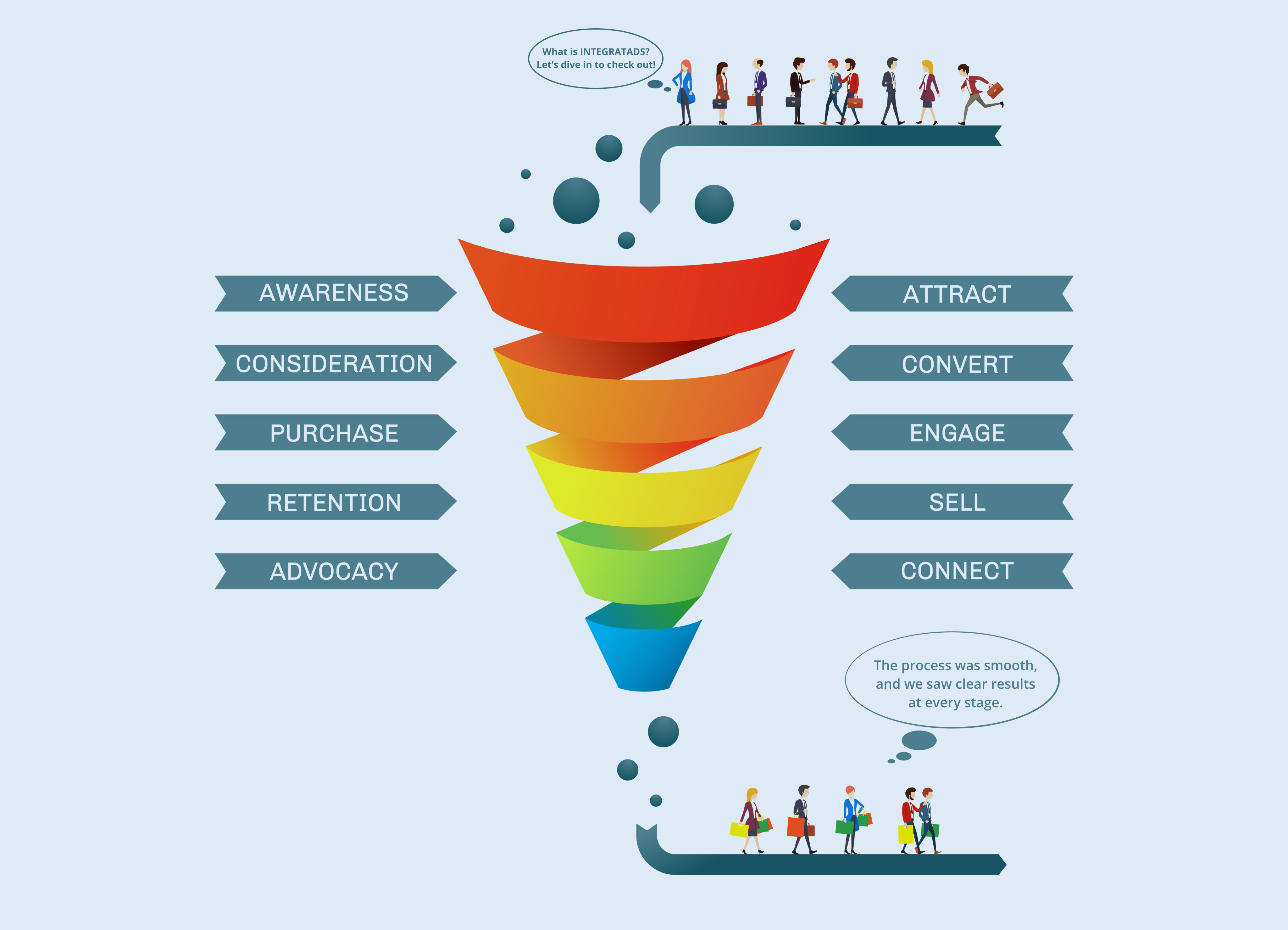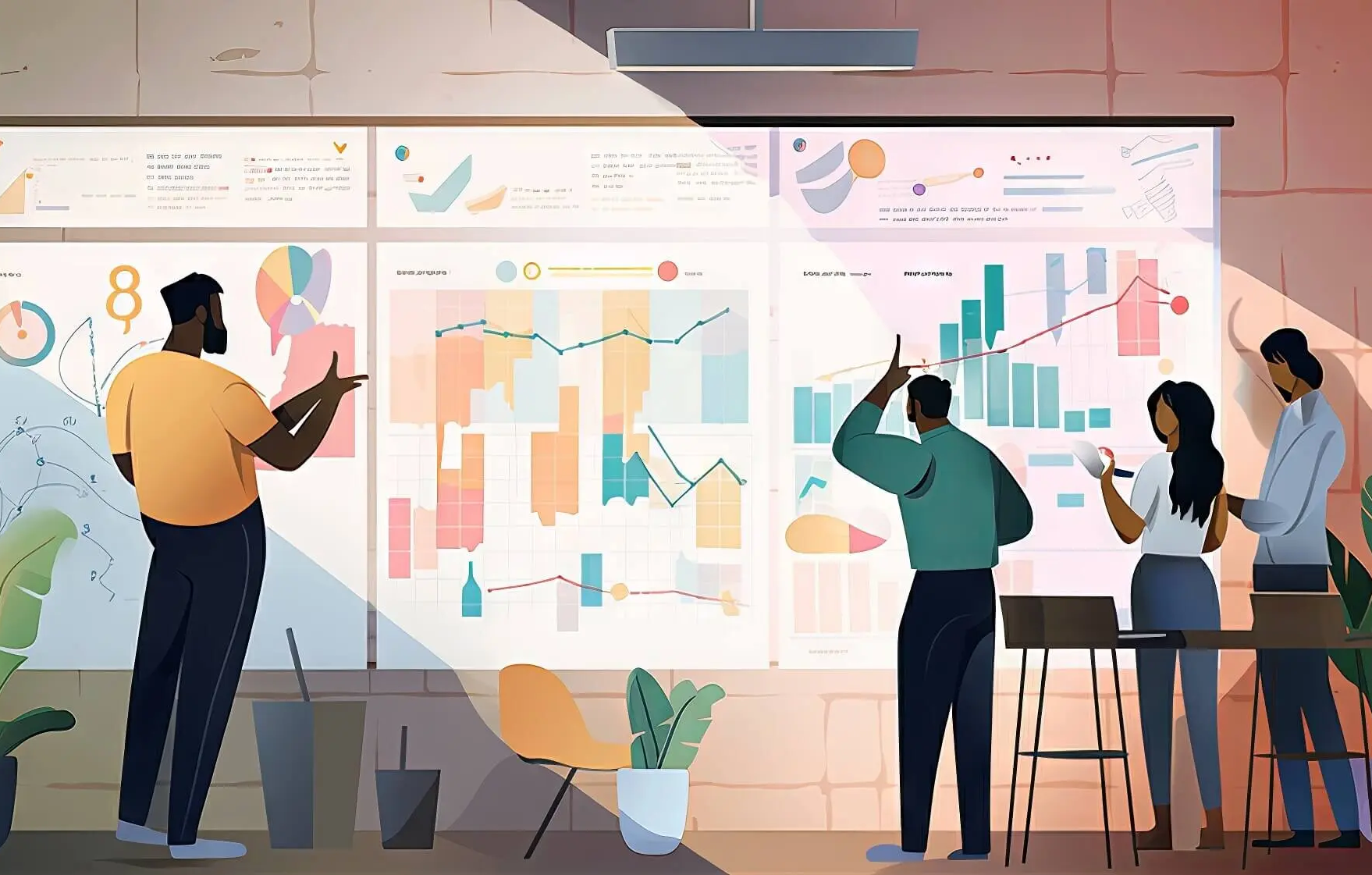
Understanding the Digital Marketing Funnel
Components of the Funnel
A digital marketing funnel consists of several stages, each critical to guiding potential customers from initial awareness to loyal advocacy. Here’s a breakdown:
- Awareness Stage: This is where potential customers first learn about your brand. They might come across your business through social media ads, Google searches, or word of mouth.
- Interest Stage: At this point, potential customers are aware of your brand and are starting to show interest. Content that educates and engages, such as blogs or videos, works well here.
- Consideration Stage: Leads are considering your product or service as a possible solution. Detailed product info, testimonials, and comparisons are valuable here.
- Conversion Stage: The lead is ready to make a purchase decision. Promotions, free trials, and strong calls-to-action can nudge them toward conversion.
- Loyalty and Advocacy Stage: Post-purchase, the focus shifts to retaining customers and turning them into brand advocates through excellent service, loyalty programs, and engaging follow-up content.
Role of Each Stage
Each stage of the funnel serves a specific purpose:
- The Awareness stage increases visibility.
- The Interest stage educates your audience about your brand.
- The Consideration stage deepens their connection with your offerings.
- The Conversion stage solidifies their decision to buy.
- The Loyalty stage encourages ongoing engagement, fostering repeat sales and referrals.
Key Metrics to Monitor in Your Funnel
Traffic and Source Analytics
Monitoring where your visitors come from (e.g., search engines, social media platforms, email campaigns) helps you understand which channels are most effective and where to focus your marketing efforts.
Conversion Rates
Analyzing conversion rates at each stage of the funnel reveals where you’re losing potential customers and where you’re succeeding, allowing you to make targeted improvements.
Customer Retention Rates
Tracking how many customers make repeat purchases or remain engaged with your brand measures the effectiveness of your retention strategies.
Lead Leakage
Identifying stages where potential customers drop out (lead leakage) can highlight problematic areas of your funnel that need refinement.
Optimizing the Digital Marketing Funnel
Improving Awareness
- Implement SEO strategies to increase organic reach.
- Engage audiences on social media with captivating content.
- Utilize paid advertising campaigns to boost visibility.
Enhancing Engagement and Interest
- Develop a robust content marketing strategy that provides value and nurtures leads.
- Offer interactive tools like quizzes and webinars to deepen engagement.
Boosting Conversion Rates
- Optimize landing pages to be clear, compelling, and conducive to conversions.
- Conduct A/B testing to find the most effective elements.
- Create clear and compelling calls-to-action that guide users to the next step.
Increasing Customer Retention
- Run targeted email marketing campaigns to keep your brand top-of-mind.
- Develop membership programs that offer exclusive benefits.
- Provide exceptional customer service to solve issues and exceed expectations.
Technology and Tools
Leverage marketing automation tools and CRM systems to streamline processes and maintain detailed insights into customer behaviors. Utilize analytics platforms to gather data and make informed decisions.
Case Studies and Examples
Illustrating successful strategies with real-world examples provides a practical perspective on what works in digital marketing. Common pitfalls, such as neglecting mobile optimization or underestimating the power of email marketing, offer learning opportunities to avoid similar mistakes.
Conclusion
The digital marketing funnel is a dynamic model that requires continuous attention and adjustment. Regular review and adaptation of your strategies based on performance metrics are essential to stay ahead in the competitive digital landscape.
Evaluate your digital marketing funnel today! Consider which areas might need refinement, and don’t hesitate to experiment with new strategies to see what resonates best with your audience. For more insights and assistance, subscribe to our newsletter or reach out for a consultation to learn how we can help you optimize your funnel for better performance.
Frequently Asked Questions
Read more

What is Creative Digital Marketing? A Comprehensive Guide
Creative digital marketing is an approach that integrates innovative ideas and creative strategies into traditional digital marketing efforts. It involves using imaginative content, engaging visuals, and unique methods to capture the audience’s attention and drive brand awareness and engagement.

7 Important Digital Marketing Metrics and KPIS to Track
The most important digital marketing metrics and KPIs businesses should track. From website traffic to conversion rates, we’ll cover the key metrics that can help you measure the success of your digital marketing campaigns. By tracking these metrics and making data-driven decisions, businesses can improve their digital marketing strategies and achieve better results.

Factors that Impact the CPC and How to Bring It Down?
Cost Per Click (CPC) is a critical metric in digital marketing that directly influences the financial efficiency of online advertising campaigns. Understanding how various factors affect CPC (cost per click) and implementing strategies to minimize it can significantly enhance campaign performance and return on investment.
